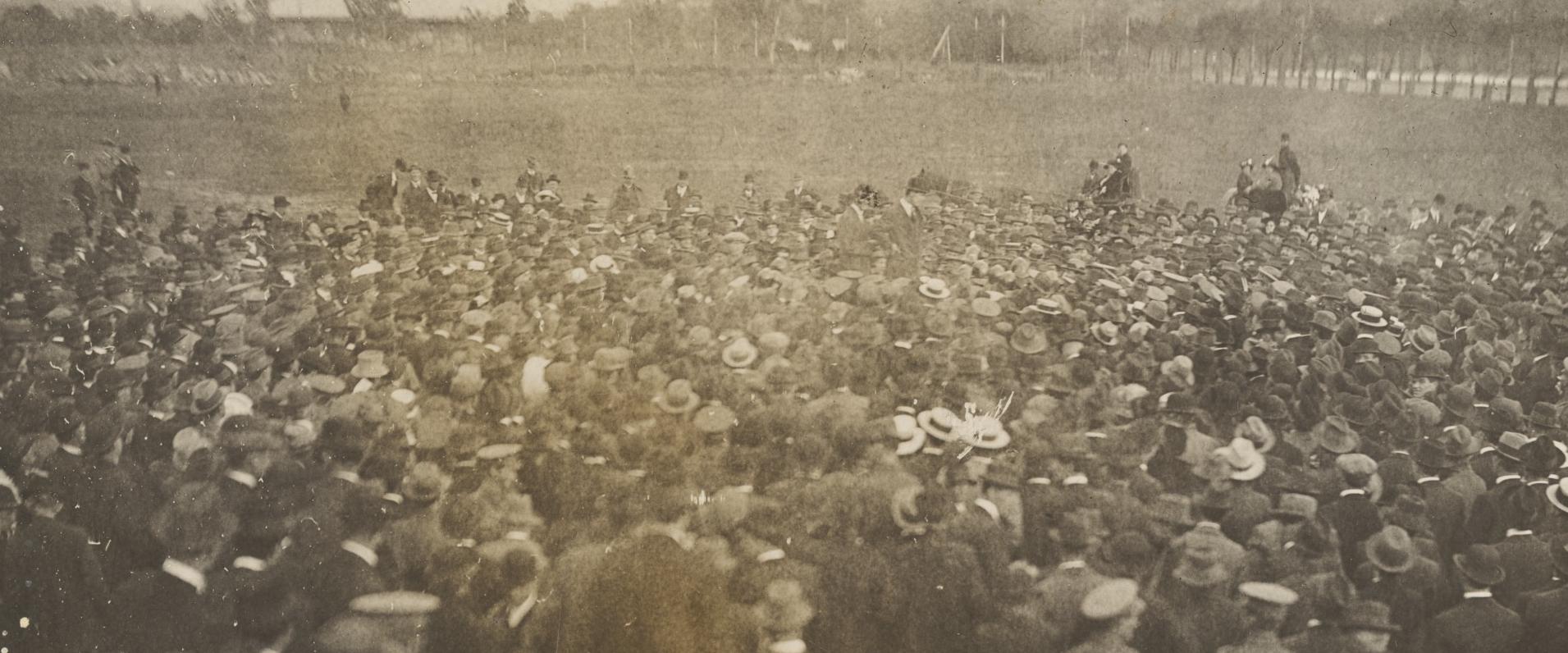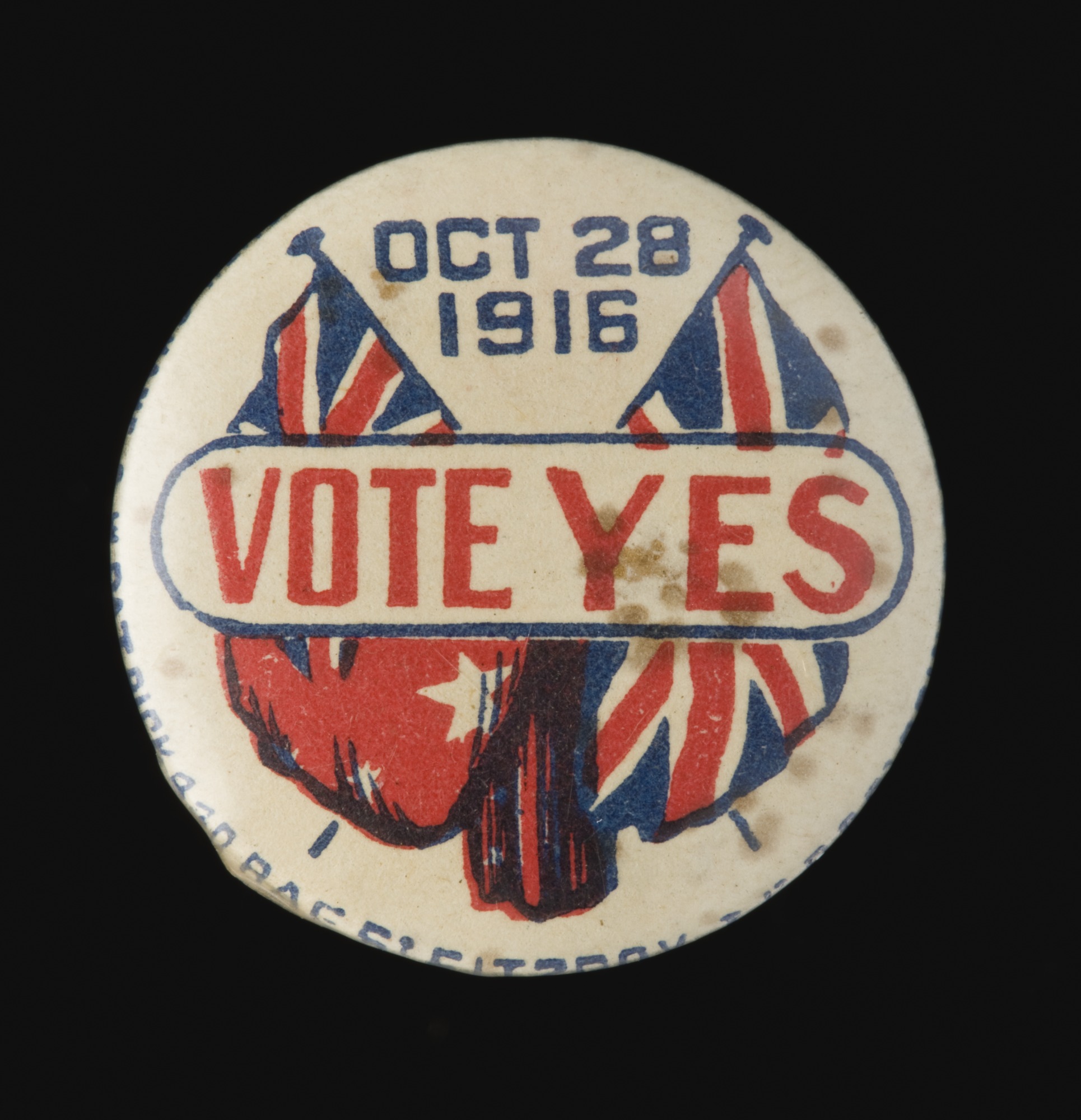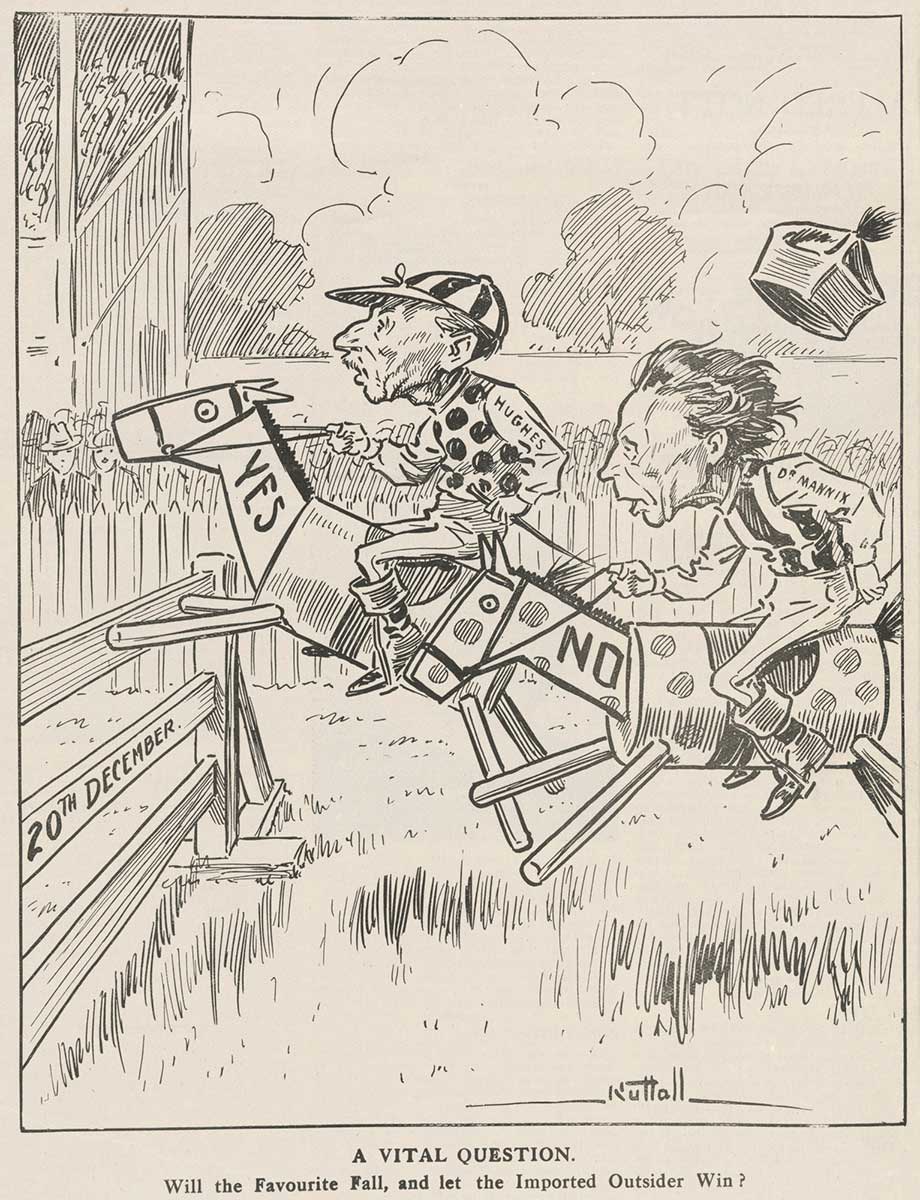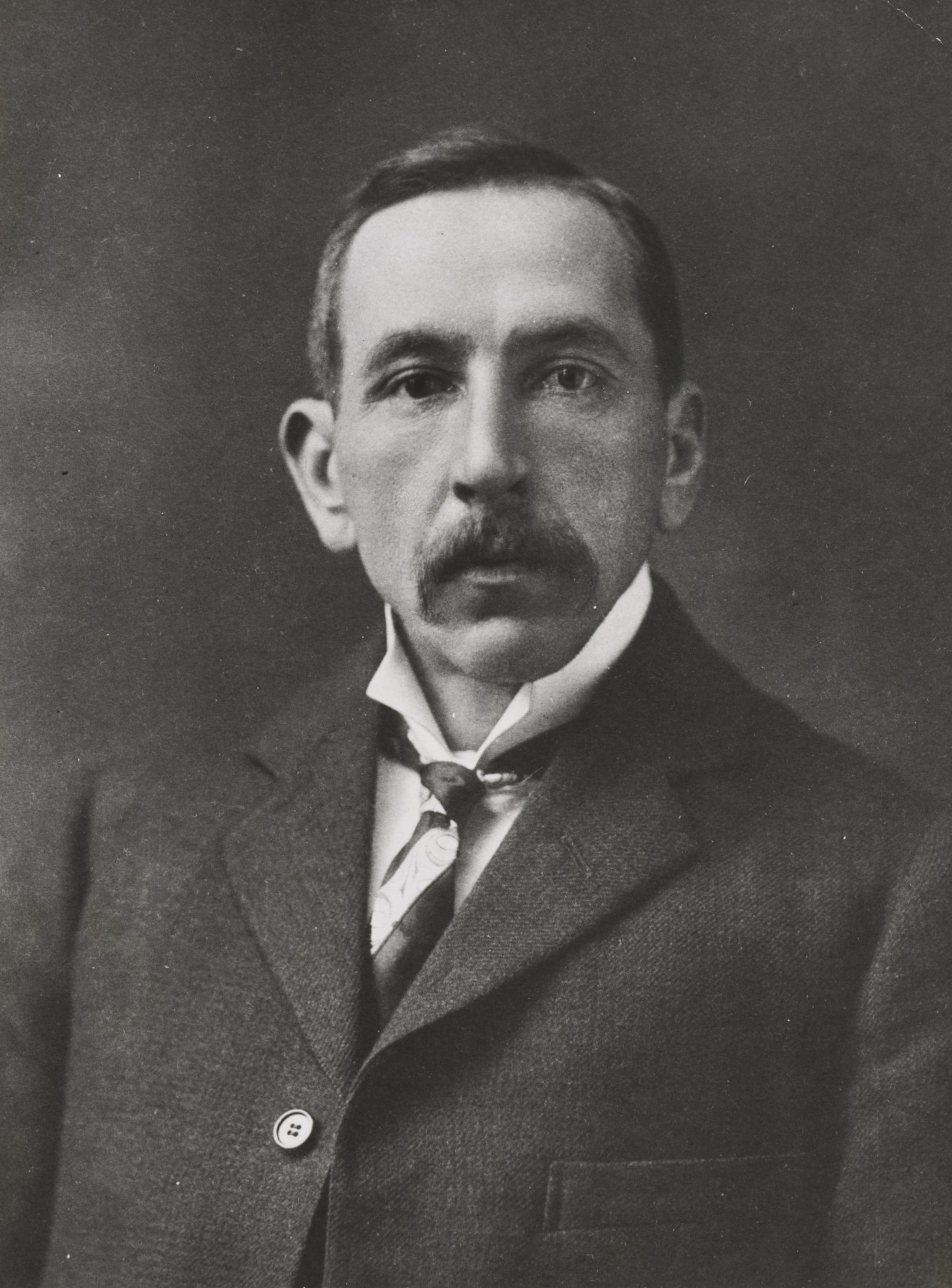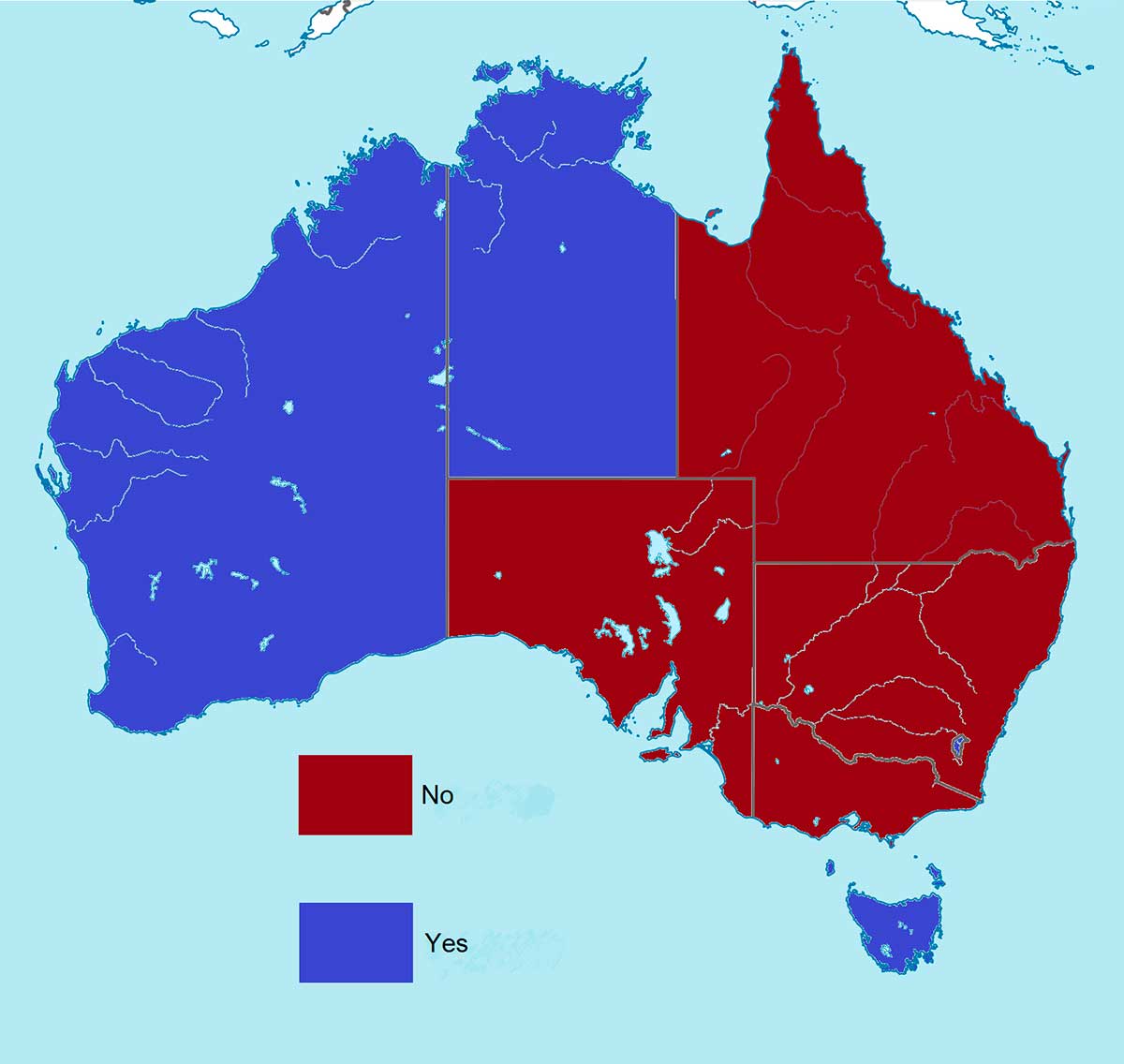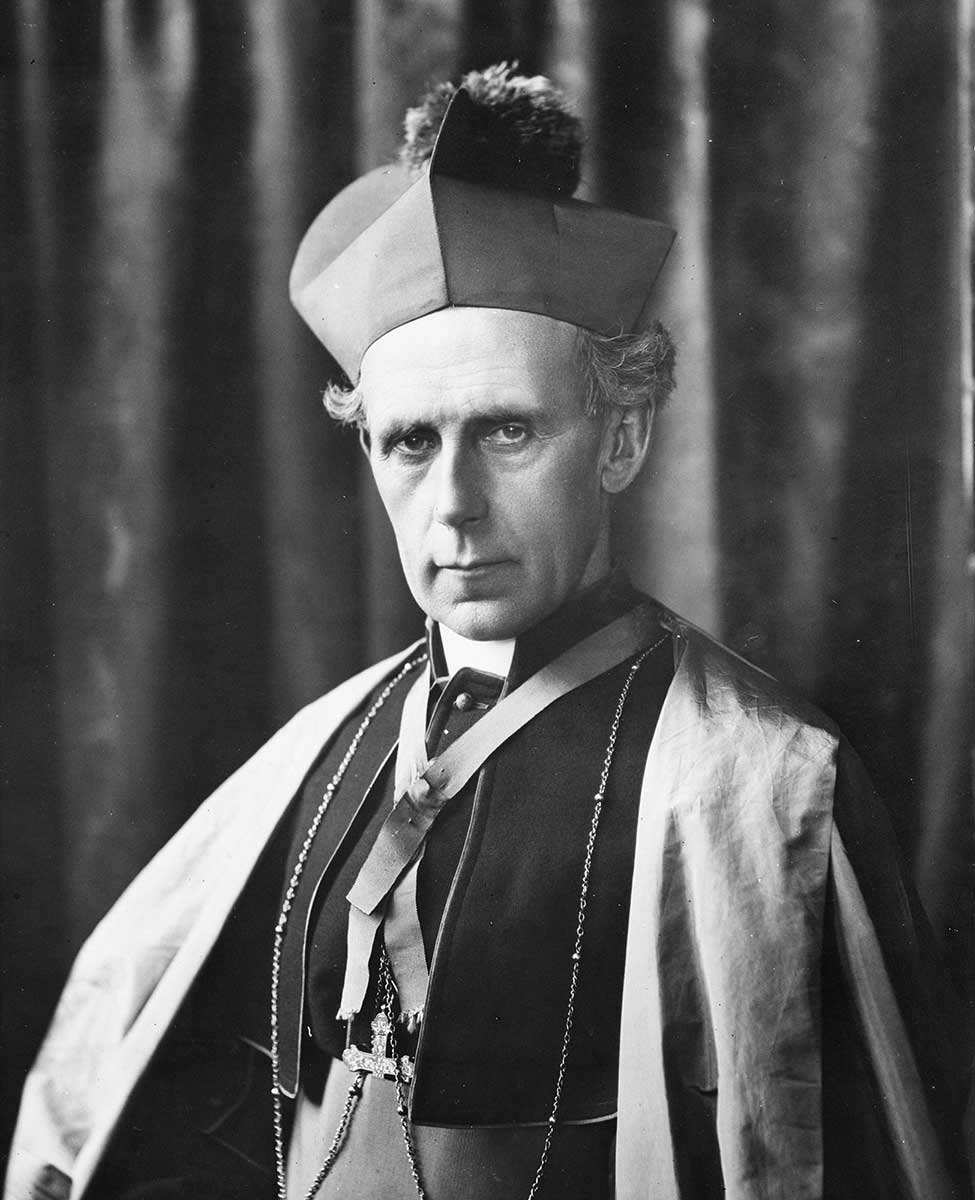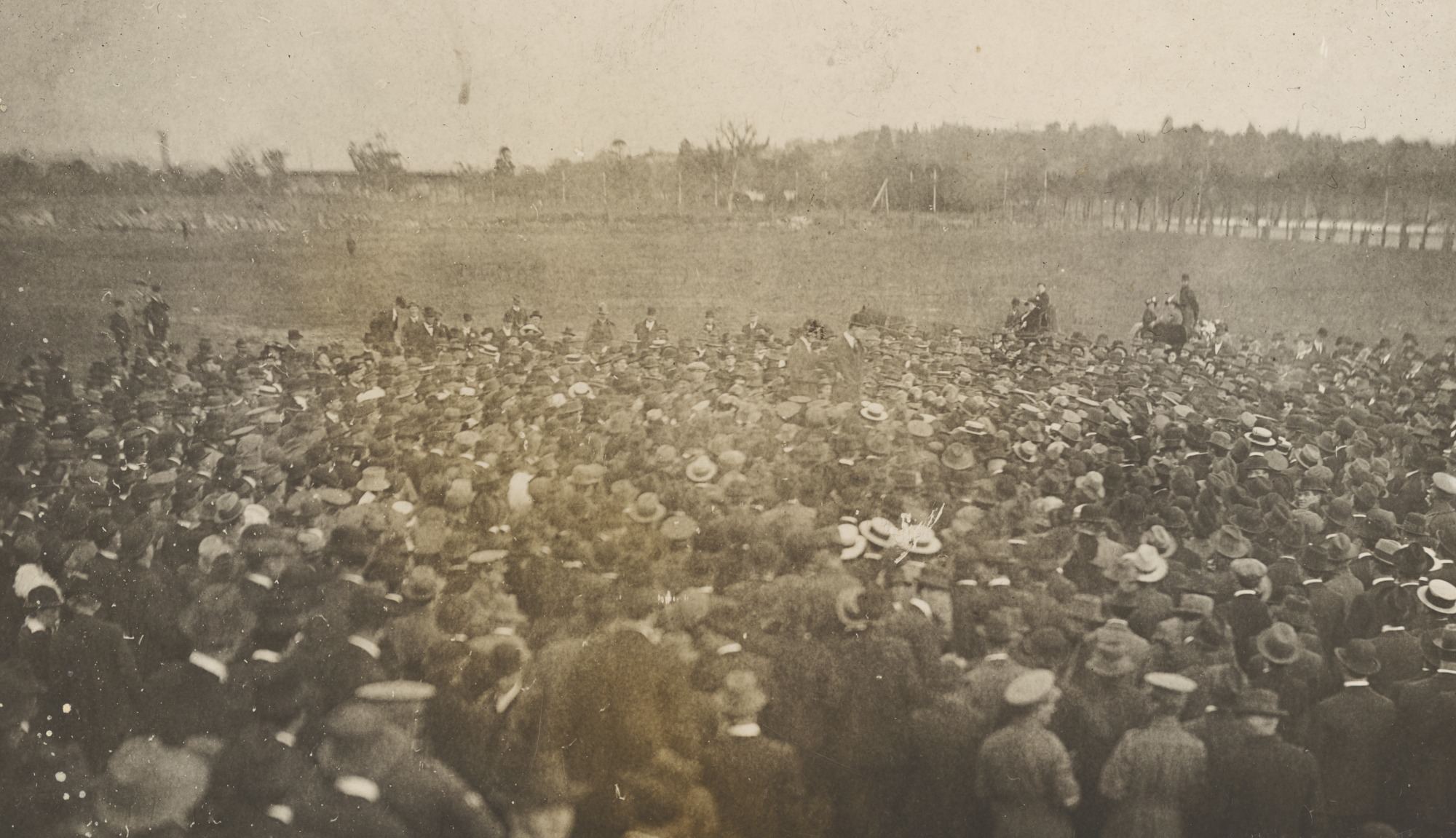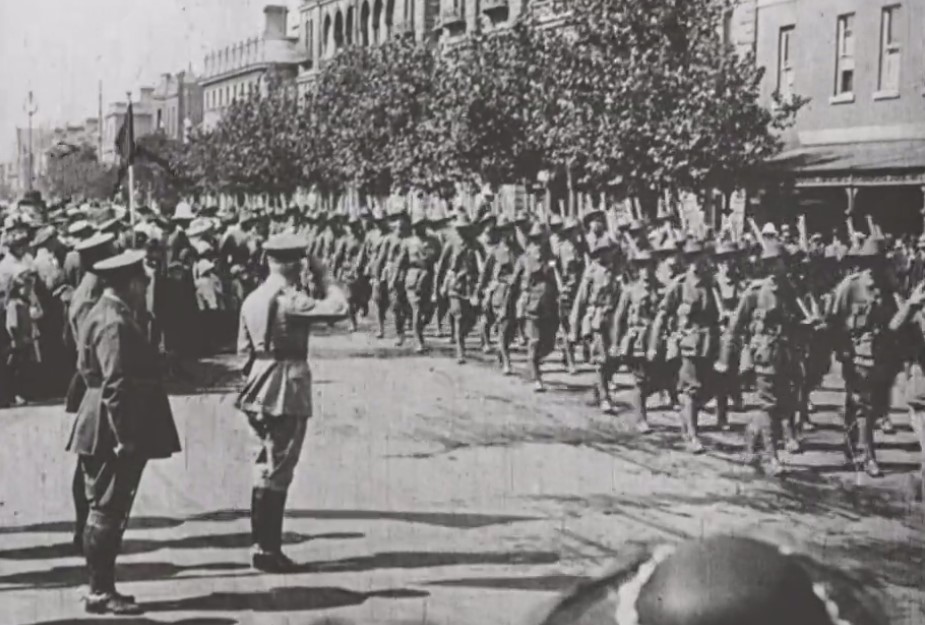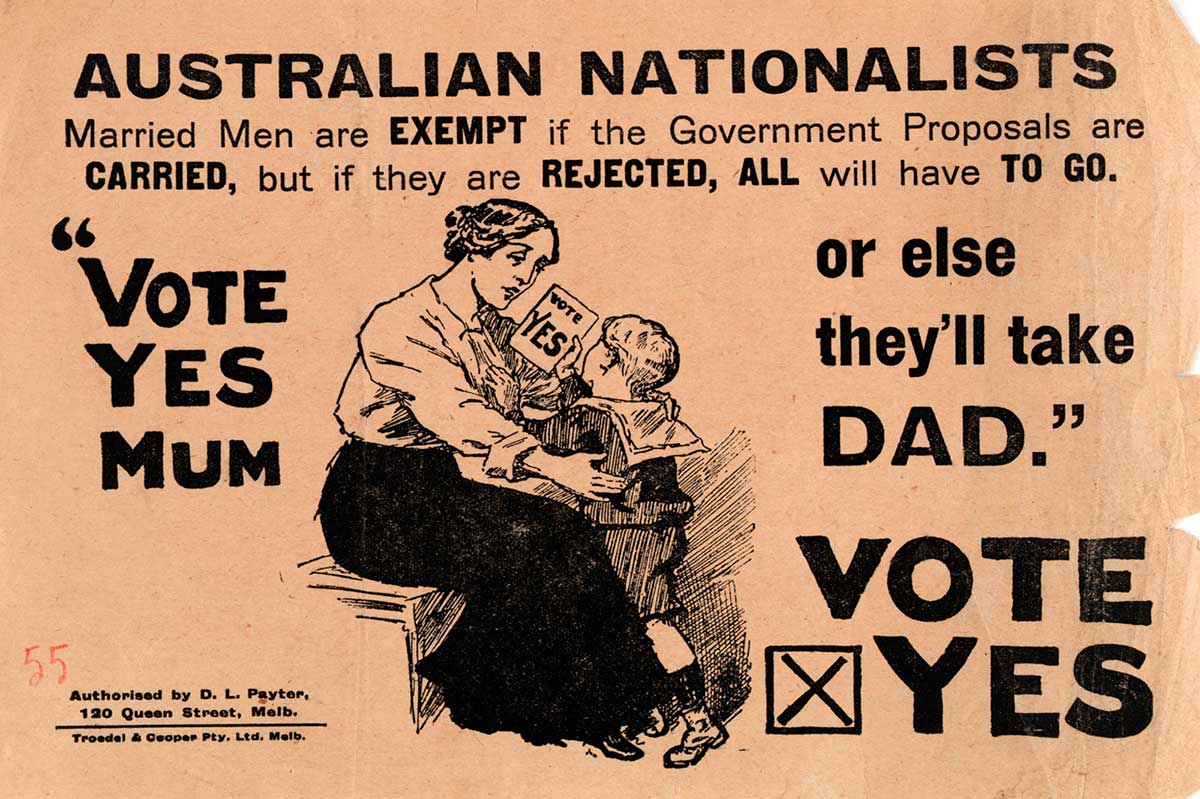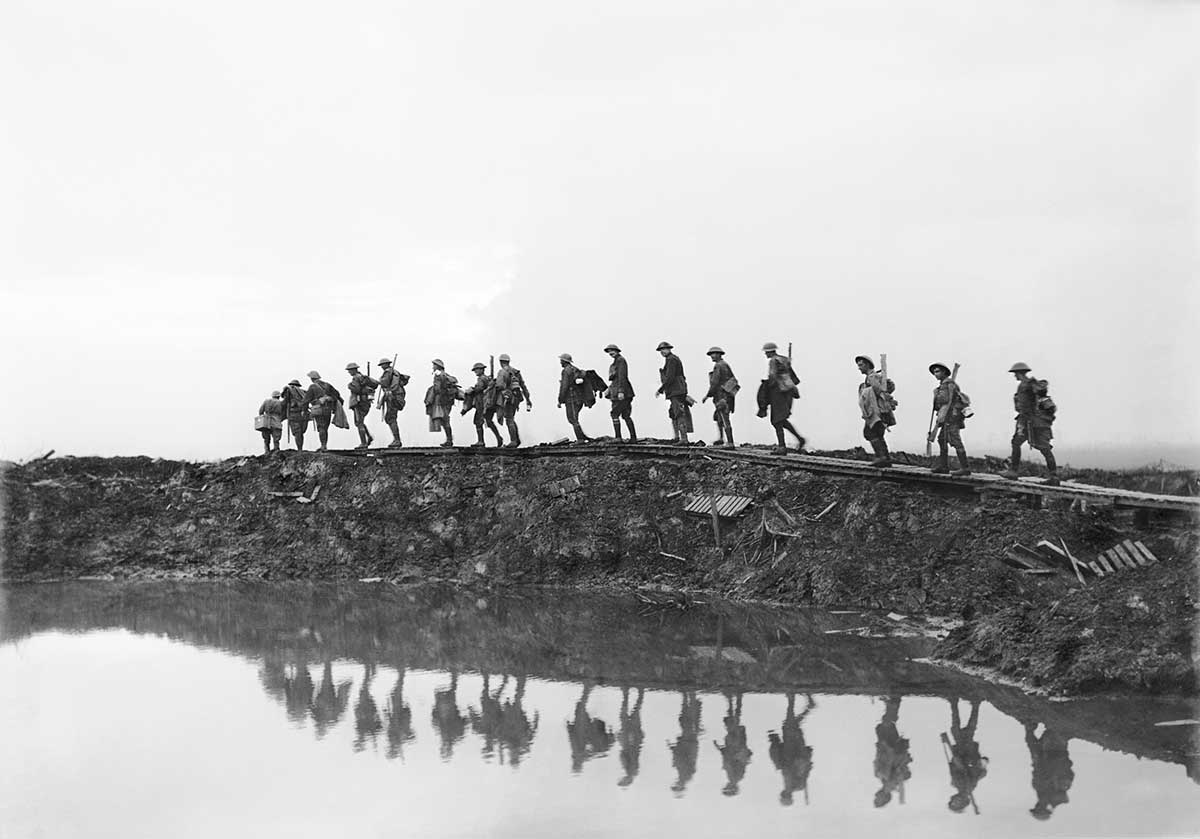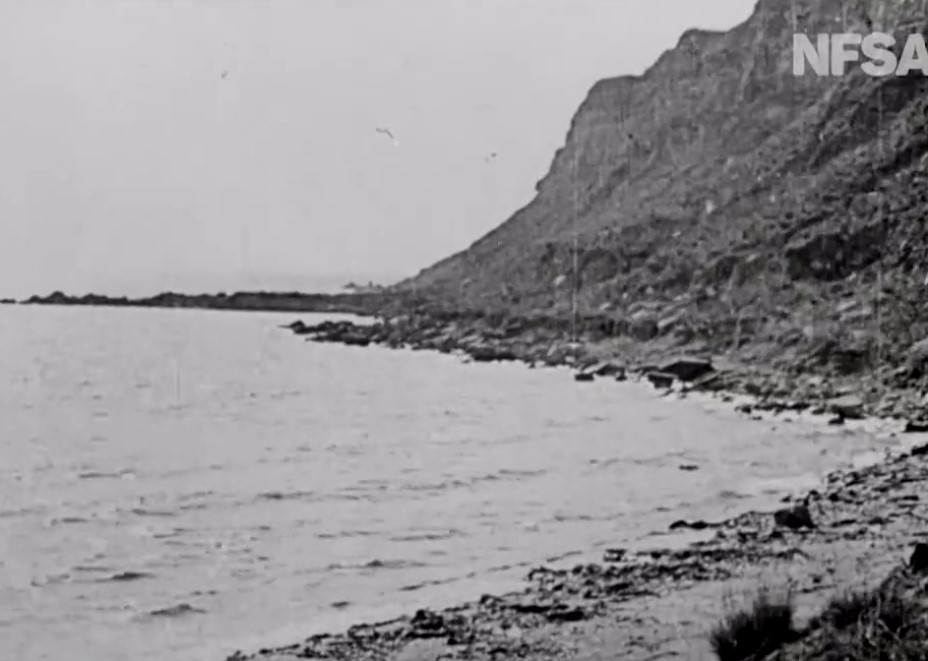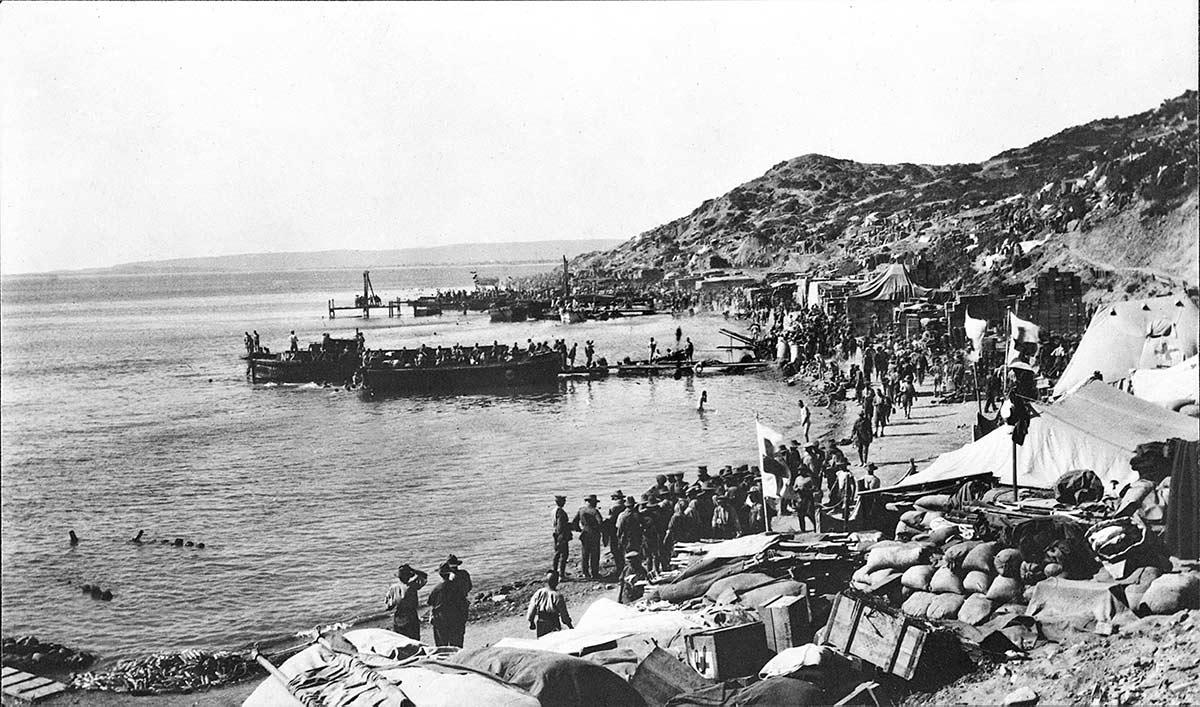A nation divided
1916–17: Conscription for military service overseas rejected in two referendums
A nation divided
1916–17: Conscription for military service overseas rejected in two referendums
In a snapshot
In 1916 and 1917, during the First World War, the Australian people were asked in two referendums if they thought that Australian men should be conscripted (forced to enlist in the armed forces) to fight overseas. The conscription debates were among the most bitter in Australia’s political history. Both the 1916 and 1917 referendums ended in a ‘no’ vote. But most Australians still believed that Australia should be involved in the war.
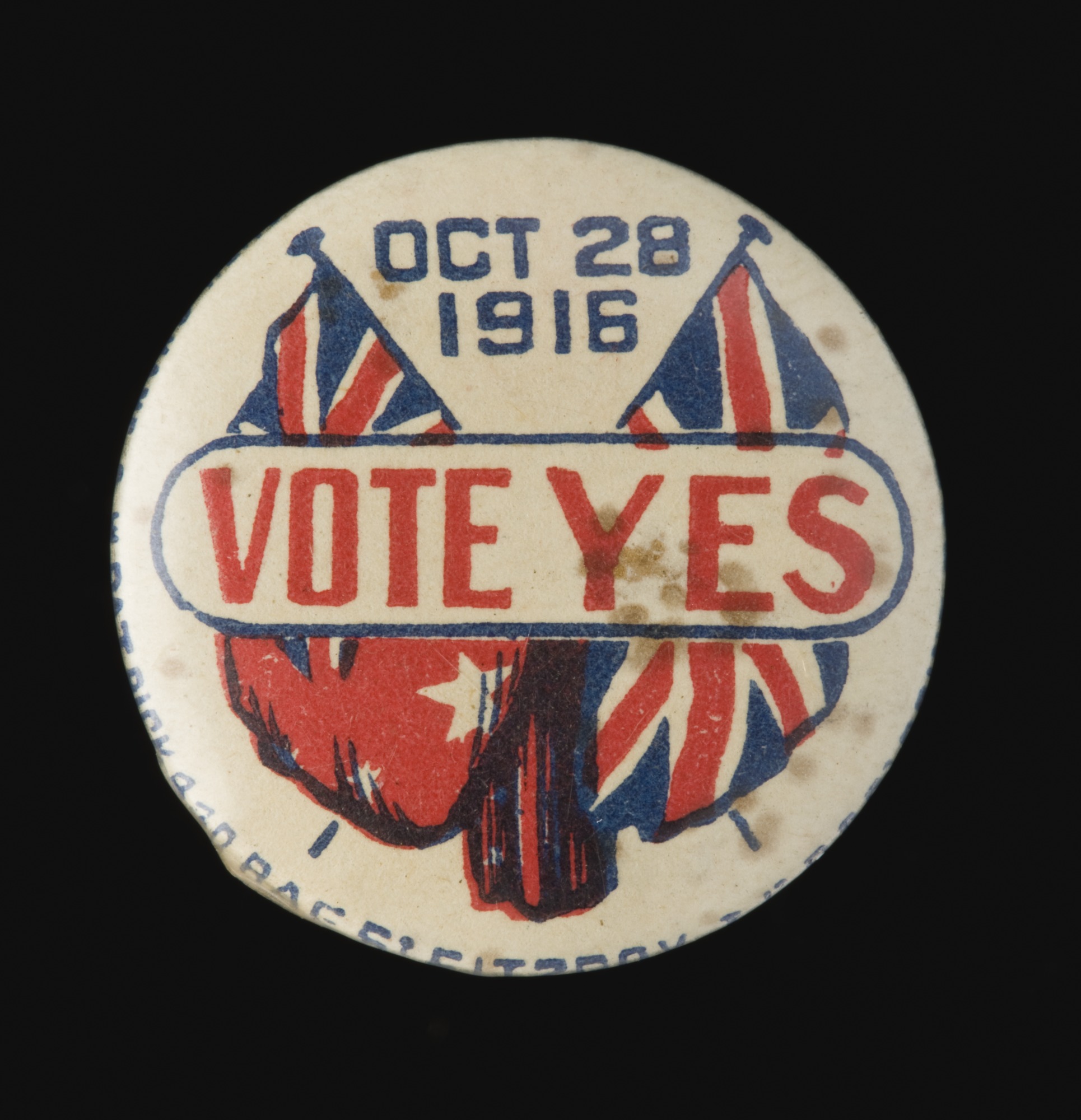
 Can you find out?
Can you find out?
1. Why did Billy Hughes want to introduce conscription in 1916?
2. What were the results of the two conscription referendums?
3. How did the conscription debates affect the Australian Labor Party?
What led to the referendums?
On 5 August 1914 Australia joined other countries in the British Empire and declared war on Germany. Men rushed to join the Australian Imperial Force (AIF) and by the end of the year more than 50,000 men had enlisted. But when the news of the disastrous Gallipoli campaign reached Australia in 1915, the number of men enlisting as AIF volunteers dropped.
Prime Minister Billy Hughes travelled to Europe in 1916 to discuss the war with British and European governments. He returned home after nearly 6000 Australian men had been killed in the first 7 weeks of the Battle of the Somme. He was convinced that the only way Australia could maintain the size of its army was to introduce conscription.
The Defence Act 1903 gave the federal government the right to conscript men for Australia’s self-defence, but Hughes had to amend this Act to make overseas military service compulsory. Hughes’ own Labor Party split on the issue, and the Senate would not support it, so Hughes decided to pressure these groups into accepting conscription by holding a referendum.
Did the first referendum pass?
The referendum was set for 28 October 1916. The debate leading up to the vote divided the country. The working class and union members mostly voted against conscription as they felt they were already doing more than their share of the fighting. Protestants with a close connection to Britain mostly voted for conscription, believing it would help the British Empire. Catholics, mostly of an Irish background, generally opposed conscription, with many unhappy about Britain’s handling of Irish demands for independence.
The result of the referendum was ‘no’ by 3.2 per cent. Even though a slim majority of Australians voted against conscription, most still believed that the war was a just cause.
Research task
Read about the conscription debates on the Billy Hughes at War website, and cast your own vote!
‘Our national existence, our liberties, are at stake. There rests upon every man an obligation to do his duty in the spirit that befits free men.’
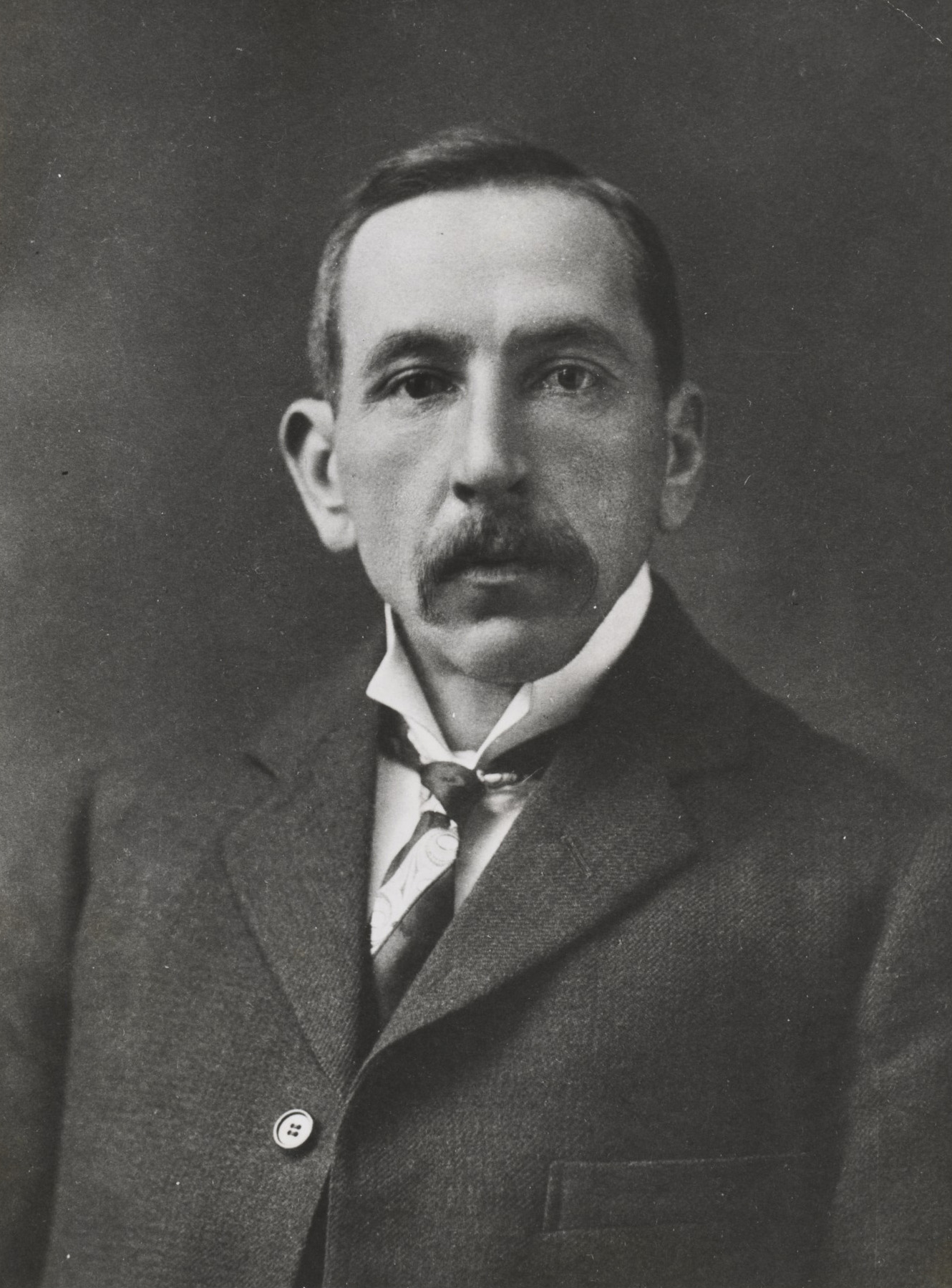
What was the effect of the first referendum?
After the 1916 referendum Hughes, along with 24 other Members of Parliament, left the Labor Party to form the new National Labor Party. The National Labor Party joined with the opposition Liberal party to form a new government, and Hughes remained Prime Minister for the rest of the First World War. The Labor Party was left weakened by the split, and it did not come to power again until 1929.
Hughes kept fighting for conscription. But a second referendum, held on 20 December 1917, also resulted in a ‘no’ vote.
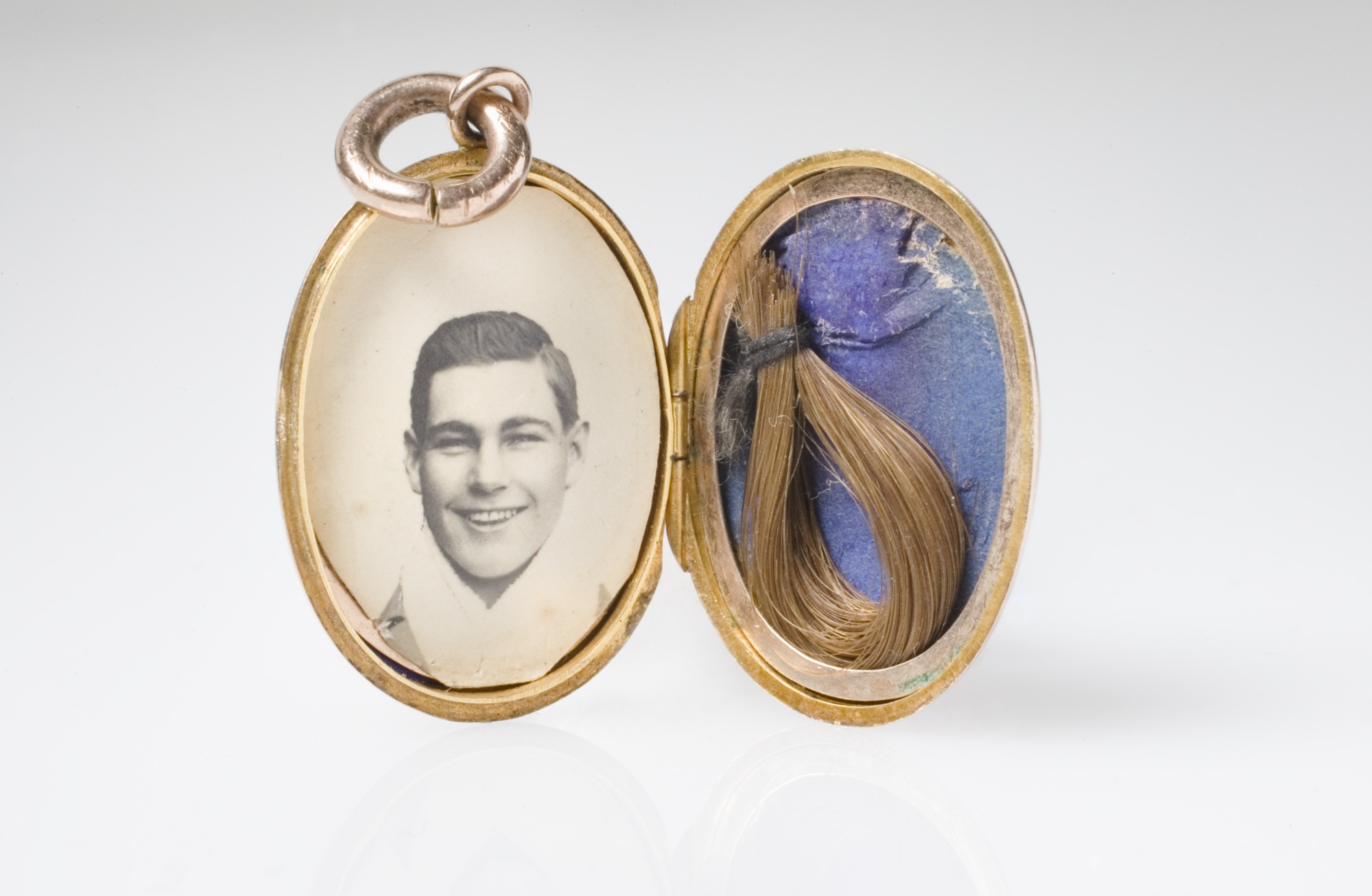
When did the war end?
On 11 November 1918 peace was finally declared. During the four years of the war more than 420,000 Australians volunteered for the AIF, the Navy and the Nursing Corps. Sixty thousand died serving their country.
Conscription for overseas military service was successfully brought in during the Second World War (1939–45), and controversially brought in again during the Vietnam War (1964–75).
Read a longer version of this Defining Moment on the National Museum of Australia’s website.
Research task
Was the 1916 vote a ‘referendum’ or was it a ‘plebiscite’? Research the meaning of both words and explain which one you think it was.
 What did you learn?
What did you learn?
1. Why did Billy Hughes want to introduce conscription in 1916?
2. What were the results of the two conscription referendums?
3. How did the conscription debates affect the Australian Labor Party?






